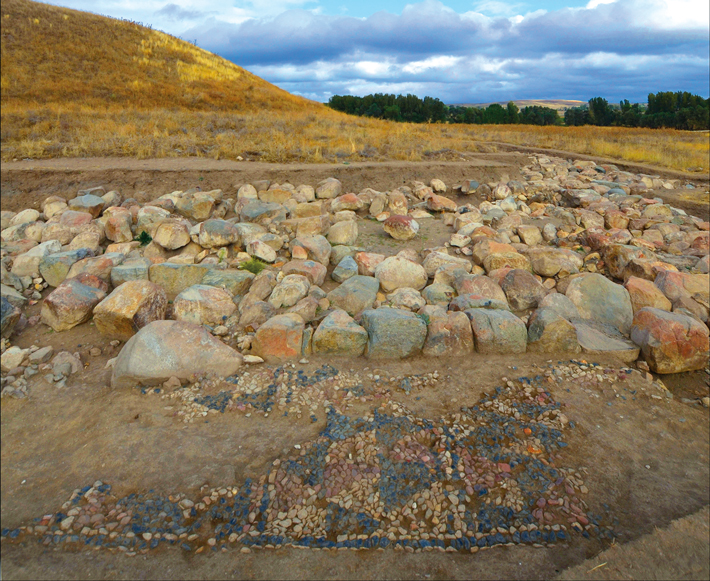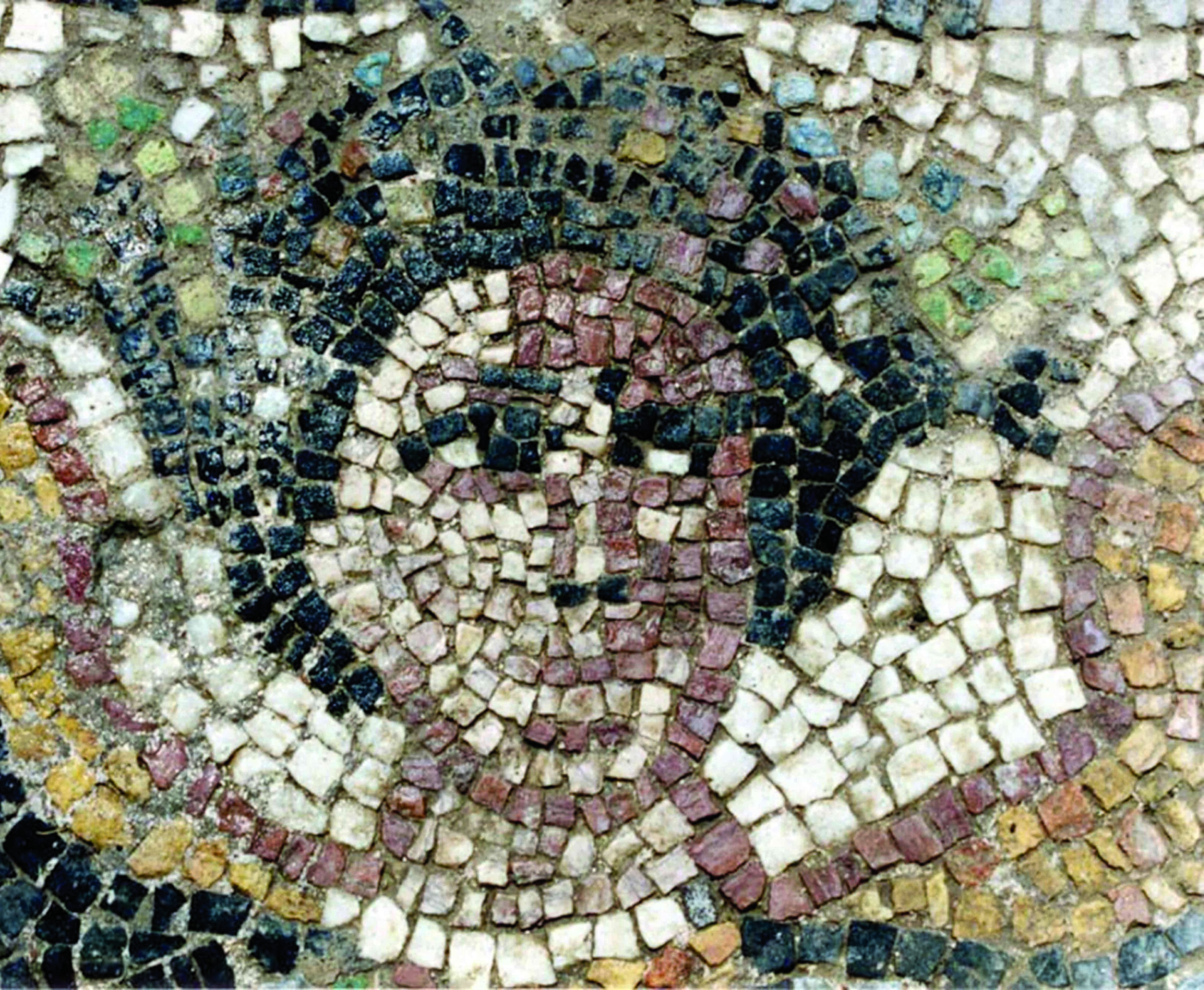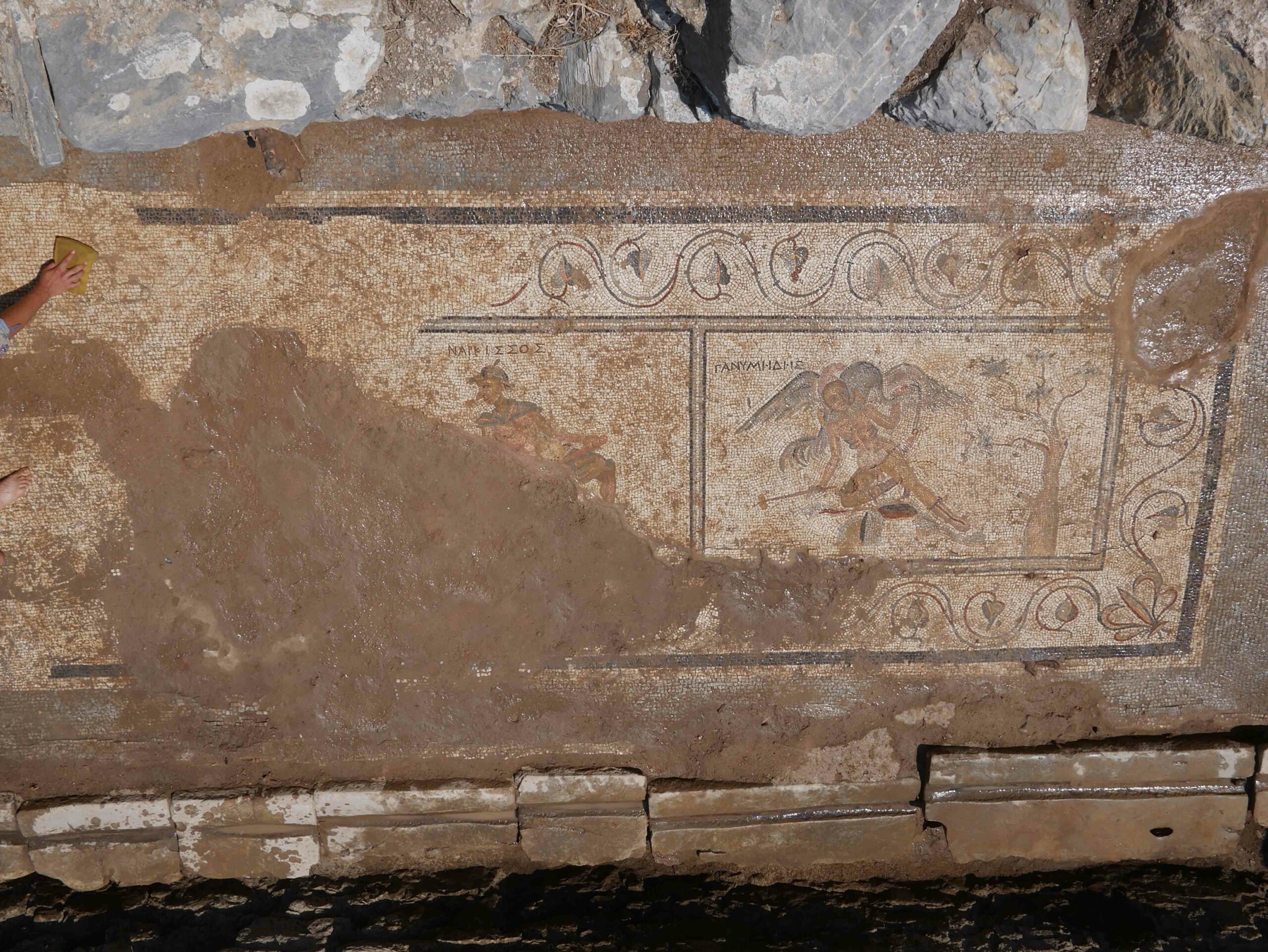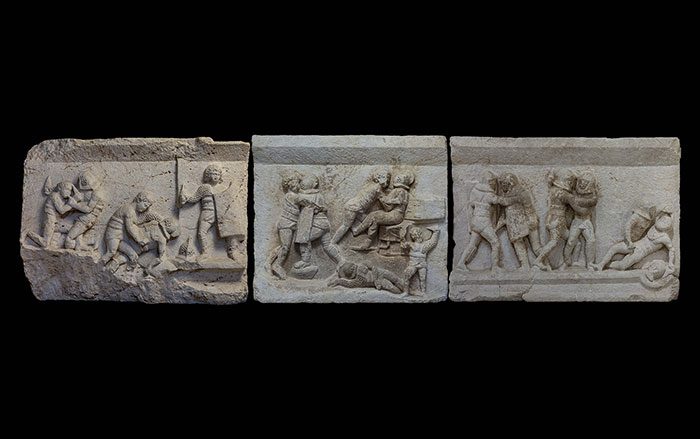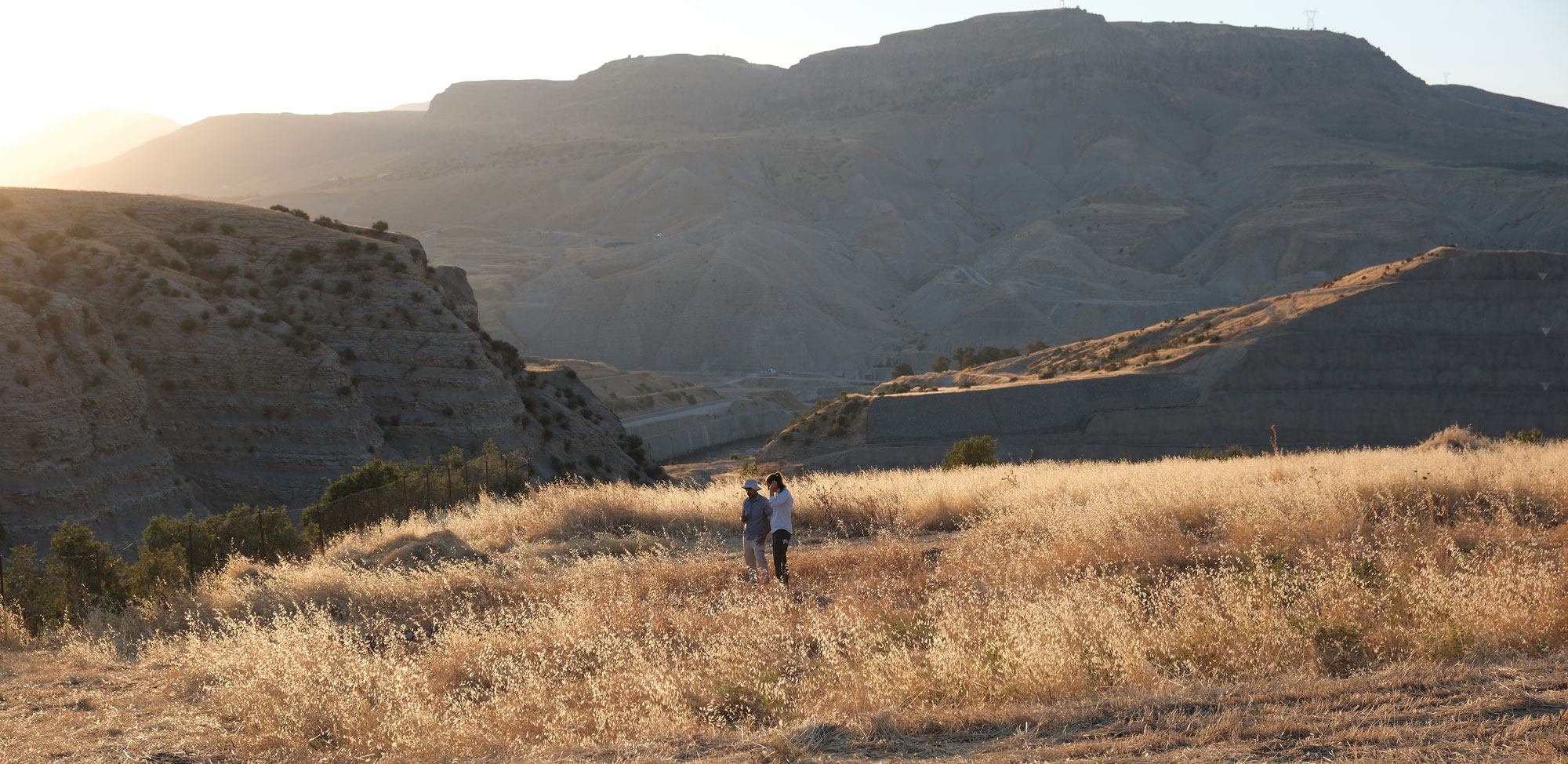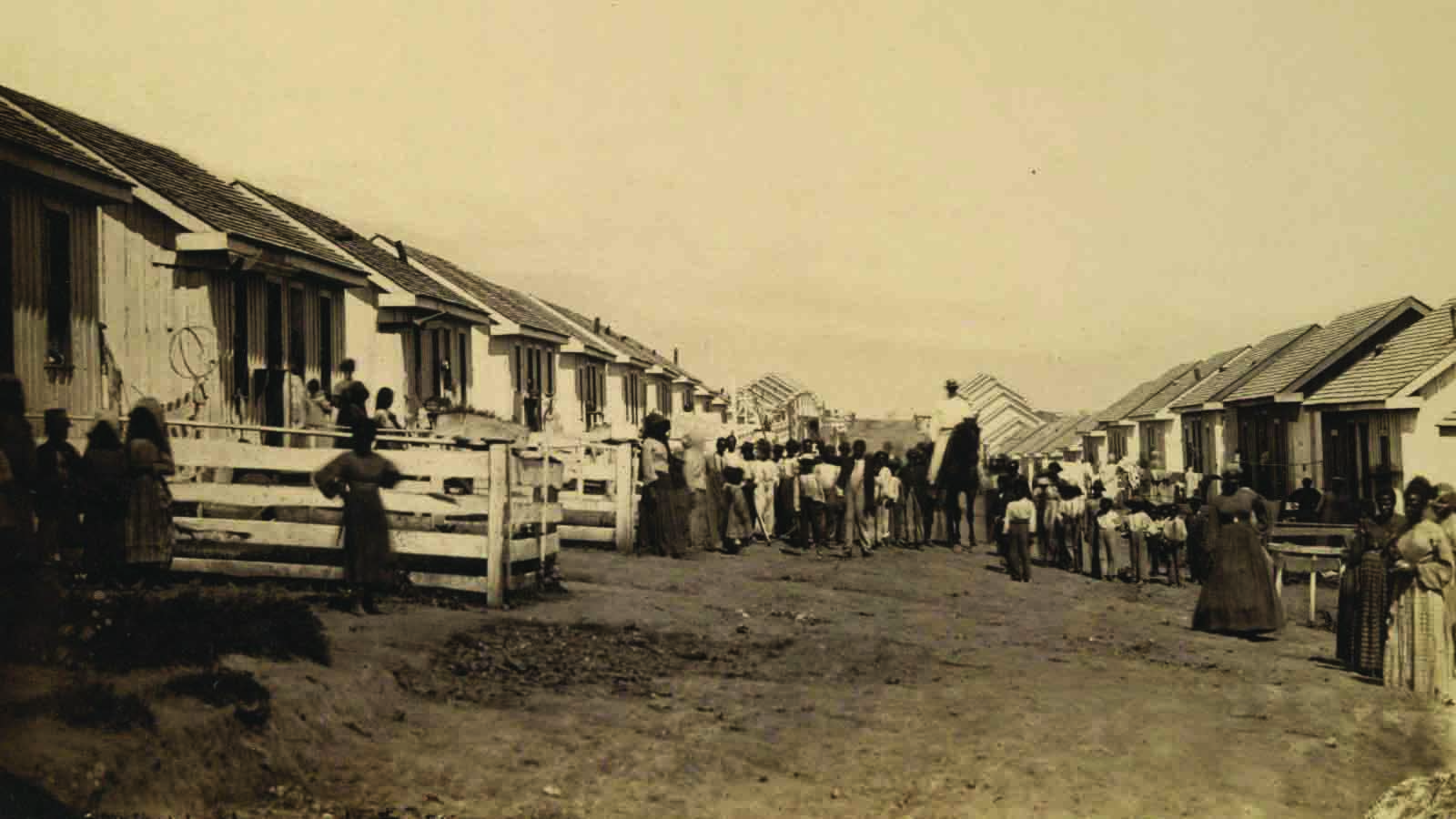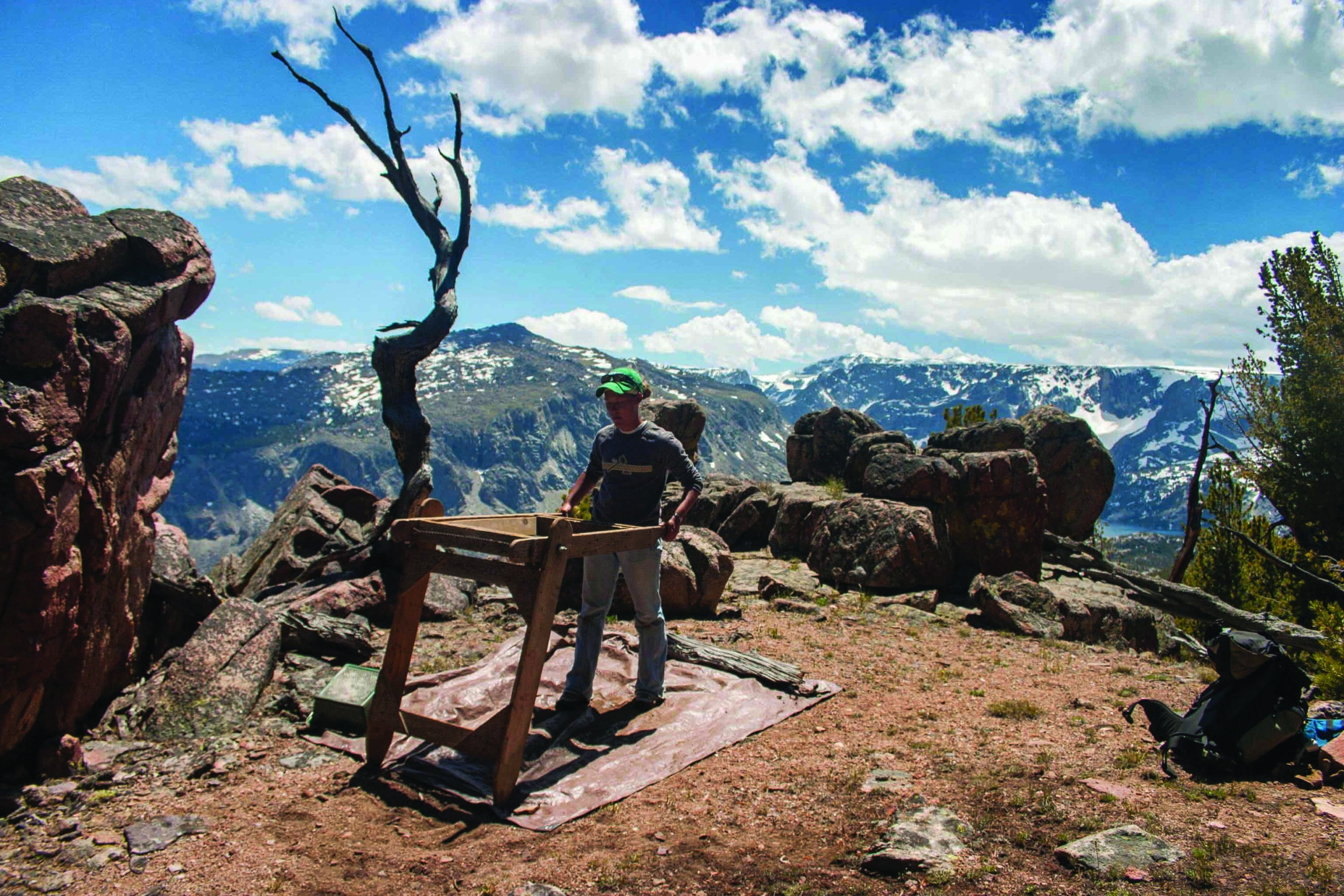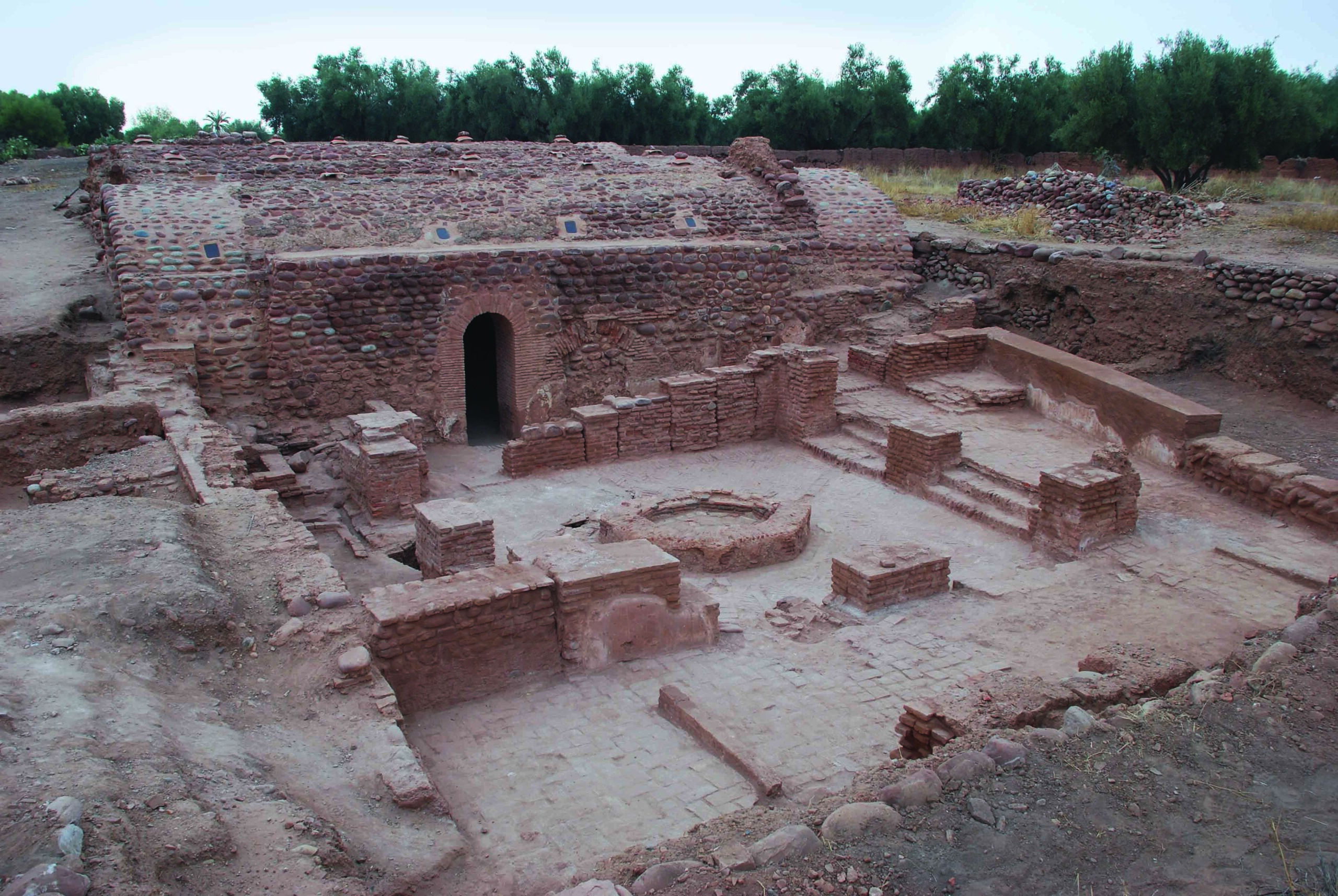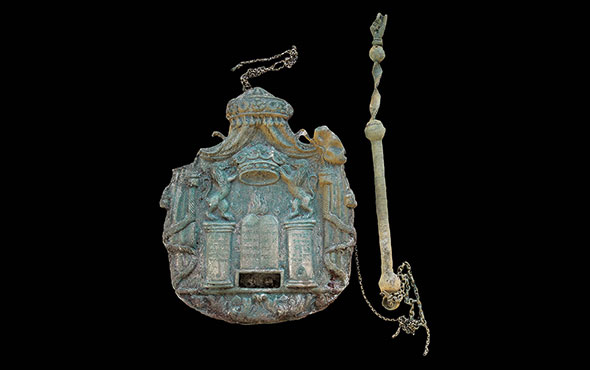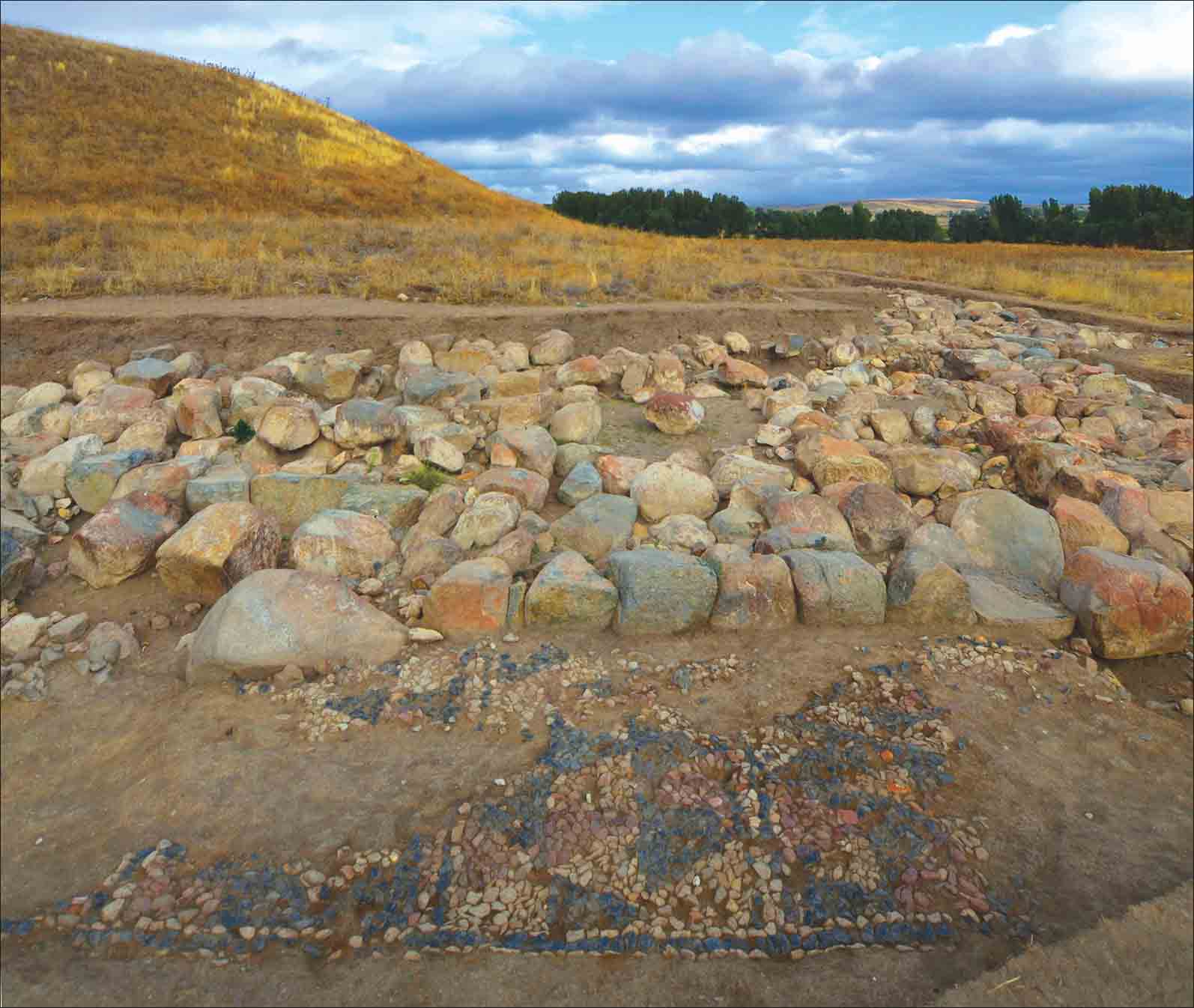
An Italian-Turkish team has unearthed the world’s oldest-known polychrome mosaic floor at Usakli Hoyuk, a Hittite settlement in central Turkey. The partially preserved mosaic measures 23 feet by 10 feet and once adorned an open courtyard belonging to a building that archaeologists believe was a second-millennium B.C. temple. The mosaic, which was set into a beaten-earth surface, consists of more than 3,000 multicolored stones arranged in rectangular frames, each with three rows of alternating white, red, and blue-black triangles. Stone pavements served a practical function in Hittite architecture. “It’s the way Hittites built their houses and public buildings, probably as a solution to prevent problems connected with rain,” says archaeologist Anacleto D’Agostino of the University of Pisa. D’Agostino adds that these colored geometric patterns have not been found at other Hittite sites, and are thought to indicate the courtyard’s association with performance of some kind of ritual.


